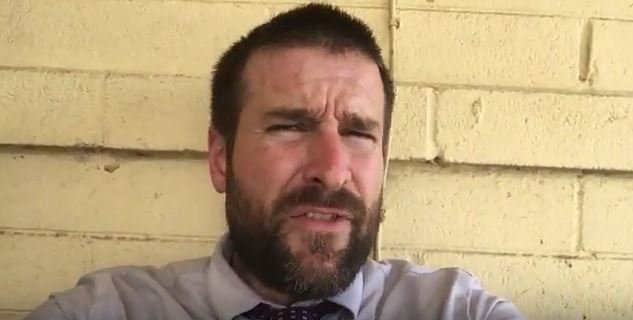
The Gerencser Family, circa 1950s Front: Robert (my Dad) and Irene Middle: Grandpa Paul Rear: Paul (Paulie), Grandma Mary, Mary, and Helen (As you can readily see, I look nothing like my dad and his family)
Dates and ages are approximate. My recollections are not what they once were. One reason for writing this post is to have a written record of these things before I someday can no longer remember them.
My grandparents immigrated from Hungary in the early part of the 20th century. I don’t know much about them. I was six years old when they died in 1963. Paul was born in 1888 and died of a heart attack in February of 1963. Mary, six years younger than her husband, died of a heart attack six weeks later.
Paul and Mary Nemett Gerencser (grr IN’ sir or grinsir) immigrated through Ellis Island and settled in Ohio. (I don’t think Paul and Mary were their given names.) They originally settled in the Akron/Cleveland area and then moved to Northwest Ohio. Best I can tell from what few official records remain, Paul and Mary Gerencser owned a farm in Defiance County, lost it during the Depression, and then bought a 100-acre farm in Williams County on the northwest corner of Williams County Road 14 and Williams-Defiance County Line Road. It was here I first met my grandparents and where they died.
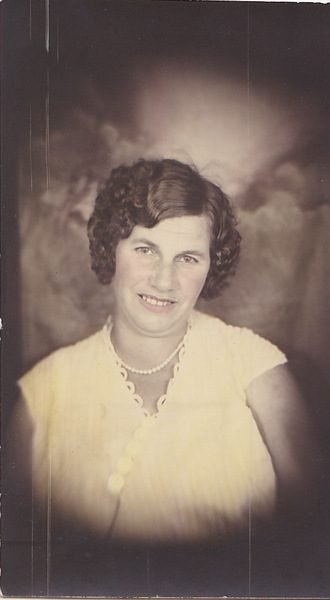
Paul and Mary Gerencser had six children: Irene, Paul Jr, Steven, Helen, Mary, and Robert. Steven died in a farming accident (he fell off the tractor and was hit by a plow or disc) as a young boy. Irene died in 2009 at the age of 87. Paul (Paulie) died in 2012 at the age of 88. Marry died in 2018 at the age of 88. Robert, my father, died in 1987 at the age of 49. Helen is still living.
The Gerencser homestead was torn down decades ago. The new owners built a ranch home in its place. The old farmhouse was a white two-story structure. I do remember a few things about the house. There was an enclosed back porch and Grandma kept big sacks of flour and sugar on the porch. I also remember the wood-fired stove. I think there was a water pump at the kitchen sink. The house did not have indoor plumbing. There was an outhouse for necessary daily functions.
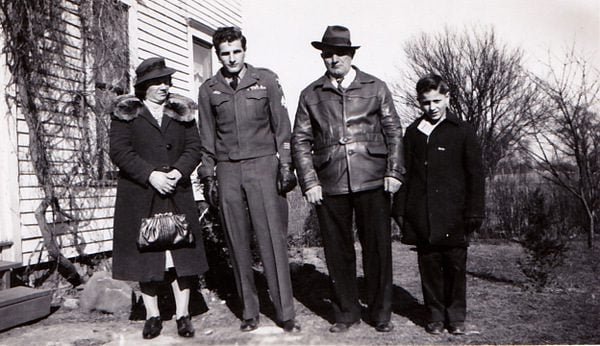
I do have a vivid memory of the creek that ran a few hundred yards from the back of the house. One year, Beaver Creek overran its banks, and floodwaters turned a portion of the low-lying farm ground into a lake. To a little boy, the flood water looked like a huge lake, but I am sure it was probably much smaller.
I don’t remember anything about my grandparents’ demeanor. I do remember they spoke Hungarian to each other. I don’t know if they spoke English at home. My father, aunts, and uncle, were schooled at the nearby one-room schoolhouse that sat on the southeast corner of Williams County Road 14 and US Highway 6. The one-room schoolhouse was torn down many years ago. My dad also went to school at Farmer, Ney, and Bryan. I do not know where any of my aunts or uncle attended school.
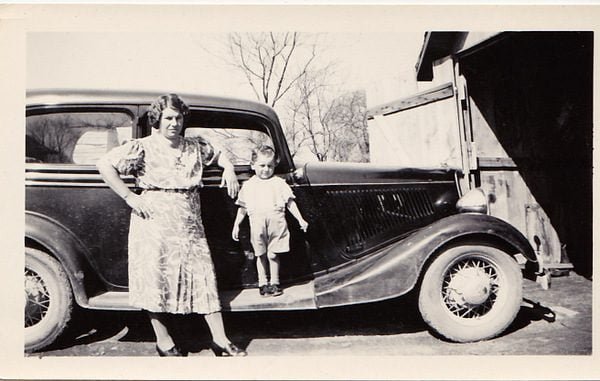
Paul and Mary Gerencser settled in northwest Ohio, Williams County because a number of Hungarian immigrants already lived here. Derek Harvey, a Toledo, Ohio man, wrote an interesting article about the Hungarians who settled in NW Ohio:
An important immigrant group to Toledo and Northwest Ohio were the people that came from the area in Central Europe known as the Magyars. This area stretched from Poland to the North to Belgrade in the southern region. The area would also encompass the large area known as Transylvania. (No Dracula jokes!) With the redrawing of borders after the first World War much would have been considered Hungary would have changed. Many large populations after this time would live in Romania, Slovakia and northern Yugoslavia. Some groups prior to World War 1 would be misidentified as Hungarians.
The largest group of this ethnic group 1.7 million came to the United States starting in 1880. Many would locate in the Birmingham neighborhood in Toledo. In 1900 there were almost 17,000 people living in Ohio that claimed this nationality. By 1920 the number would increase to 73,181. The primary group of immigration was males under the age of 30. Almost 90% of them were literate, but would take dangerous jobs that involved using their hands. This job areas in Toledo included automotive, glass and railroad industries. They tended to only come to the United States temporarily and over 50% would return to their homeland. Many would come back or just stay.
The religion of the Hungarians in Toledo was Catholic. Their home church in town St Stephen’s Catholic Church. The early population of this church was almost all Hungarian. This is a valuable place to check for church records for people of this nationality. The church was the center of their socialization activities. It would later become the center of their fraternal organizations. In Toledo a popular event was the Grape Harvest Festival and the Easter egg sprinkling. These groups and events played a important part of the assimilation of Hungarians into the fabric of Toledo. Family units in Hungarian early life extended beyond the immediate family. It was referred to as the “sib” and included aunts, uncles, cousins and godparents who might not be relatives.
A common practice after 1910 was for Hungarian families to take in recent immigrants primarily males. The husband and the boarders would work outside the home while the women would take care of the chores necessary for maintaining a household. The diet would lean towards meat and very few dairy, fruit or vegetables. Wonderful opportunities exist for more understanding of Hungarians genealogy. Great strides have taken place in many parts of the United States to get a better understanding of this group. There heritages are being preserved and new resources are being discovered daily.
From time to time I will run into local Hungarians who remember my dad or my aunts and uncle. Mary and Helen sang on the radio in the 1940s, and every so often someone will ask me if I am related to them. When someone notices my last name and asks me, are you related to ____________, the answer is always yes. All the Gerencsers in northwest Ohio are related to one another. I have second and third cousins in the Chicago, Benton Harbor Michigan, and Akron/Cleveland area whom I have never met. Locally, I have a few first and second cousins.
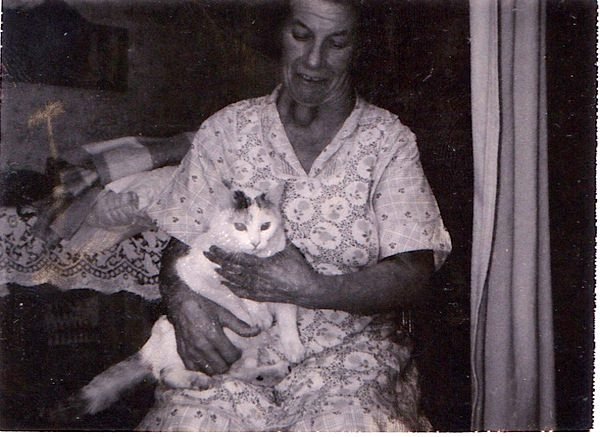
When Aunt Helen with Alzheimer’s was over at our house several years ago, she didn’t know who the woman in the picture above was, but she with delight said, oh, there’s my cat Pickles.
I am not certain what my grandparent’s religion was, but I suspect they were Catholics.
I regret not taking time to know my family history while those who could tell it to me were still alive. My dad died 35 years ago, and my grandparents died almost 60 years ago. Such is the lament of an old man. As death comes nearer and nearer to my door, I think more and more about the past. I wonder . . . what was it like for my dad to grow up on a farm? I will never be able to ask questions like this. Sometimes, when we drive down US 15/127 to Bryan, I gaze off to the left as we pass the Williams-Defiance County Line. I try to picture my grandparents, my dad, and my aunts and uncle, working the ground and taking care of the farm. I wonder about their hardships, about the hard work it took to eke out a living from the flat as an ironing board land of Williams County Ohio.
I have lots of questions…
I originally wrote this post eight years ago. Since then, I have learned that “Dad” was not my biological father; that my father was a truck driver who had a brief fling with my 17-year-old mother; that I have half brothers and sisters. Regardless, for good or ill, Robert Gerencser was my father. (Please see Questions: Bruce, How Was Your Relationship with Your Father?)
Bruce Gerencser, 66, lives in rural Northwest Ohio with his wife of 45 years. He and his wife have six grown children and thirteen grandchildren. Bruce pastored Evangelical churches for twenty-five years in Ohio, Texas, and Michigan. Bruce left the ministry in 2005, and in 2008 he left Christianity. Bruce is now a humanist and an atheist.
Connect with me on social media:
Your comments are welcome and appreciated. All first-time comments are moderated. Please read the commenting rules before commenting.
You can email Bruce via the Contact Form.


